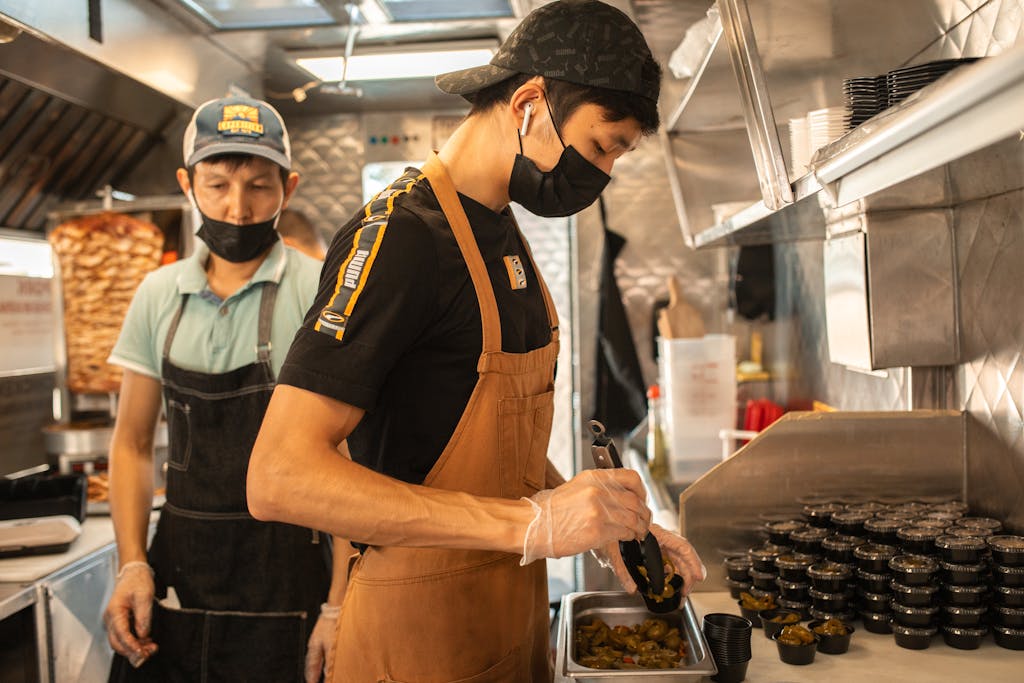Why HACCP is Essential for Catering: Ensuring Hygiene and Food Safety
Food safety is the cornerstone of every successful catering operation. Implementing HACCP in catering ensures that meals are prepared, stored, and served under strict safety and hygiene standards. From corporate events to industrial kitchens, HACCP protects both clients and staff while enhancing your catering reputation.
In this guide, we’ll explain why HACCP in catering is crucial and how catering businesses can implement it effectively.
What is HACCP in Catering?
HACCP (Hazard Analysis and Critical Control Points) is a globally recognised system that identifies, evaluates, and controls food safety hazards. In catering, food passes through multiple stages—storage, preparation, cooking, and serving. Each stage can present risks such as contamination, spoilage, or temperature abuse.
By following HACCP in catering, businesses proactively prevent these hazards rather than reacting to problems after they occur.
Key Principles of HACCP in Catering
There are seven core principles of HACCP in catering:
- Conduct a hazard analysis – Identify potential biological, chemical, and physical hazards.
- Determine critical control points (CCPs) – Pinpoint stages where controls are essential.
- Establish critical limits – Define safe boundaries, such as cooking temperatures.
- Monitor CCPs – Regularly check cooking, storage, and handling practices.
- Define corrective actions – Procedures to follow if limits are exceeded.
- Verification procedures – Confirm that HACCP systems are effective.
- Documentation and record-keeping – Maintain logs for compliance and audits.
These principles ensure a systematic approach to food safety in catering operations.
Why Hygiene is Crucial in Catering
Hygiene is a fundamental part of HACCP in catering. Catering kitchens handle large quantities of food, which increases the risk of cross-contamination and bacterial growth. Maintaining strict hygiene standards protects both staff and customers.
Best hygiene practices include:
- Frequent handwashing and use of gloves
- Clean uniforms and protective gear for all staff
- Colour-coded chopping boards and utensils to separate raw and cooked foods
- Regular sanitisation of work surfaces and equipment
Practical Steps to Implement HACCP in Catering
1. Supplier Approval
Only source ingredients from trusted, HACCP-compliant suppliers. Verify certifications and storage practices.
2. Temperature Control
Ensure cold foods remain below 5°C and hot foods stay above 63°C. Use thermometers and maintain logs.
3. Cross-Contamination Prevention
Separate raw and cooked foods, sanitise surfaces, and monitor staff practices.
4. Staff Training
Train all catering staff on HACCP principles, hygiene standards, and allergen management.
5. Documentation
Keep accurate records of cooking, storage, and cleaning schedules. Documentation proves compliance and helps identify areas for improvement.
Benefits of HACCP in Catering
- Ensures safe, high-quality meals for clients
- Reduces the risk of foodborne illnesses
- Builds trust and confidence among customers
- Demonstrates regulatory compliance
- Improves efficiency and accountability in catering operations
Internal and External Links
- Internal: Link to a related post: “Catering Hygiene Checklist: Daily Practices for a Cleaner Kitchen”
- External: Food Standards Agency HACCP guidance
Final Thoughts
Implementing HACCP in catering is more than following a regulation—it is a commitment to quality, safety, and professionalism. Catering businesses that adopt HACCP can serve meals with confidence, protecting both their clients and staff.
Food safety is the foundation of trust in catering, and HACCP ensures that every plate leaving the kitchen meets the highest standards of hygiene and safety.

